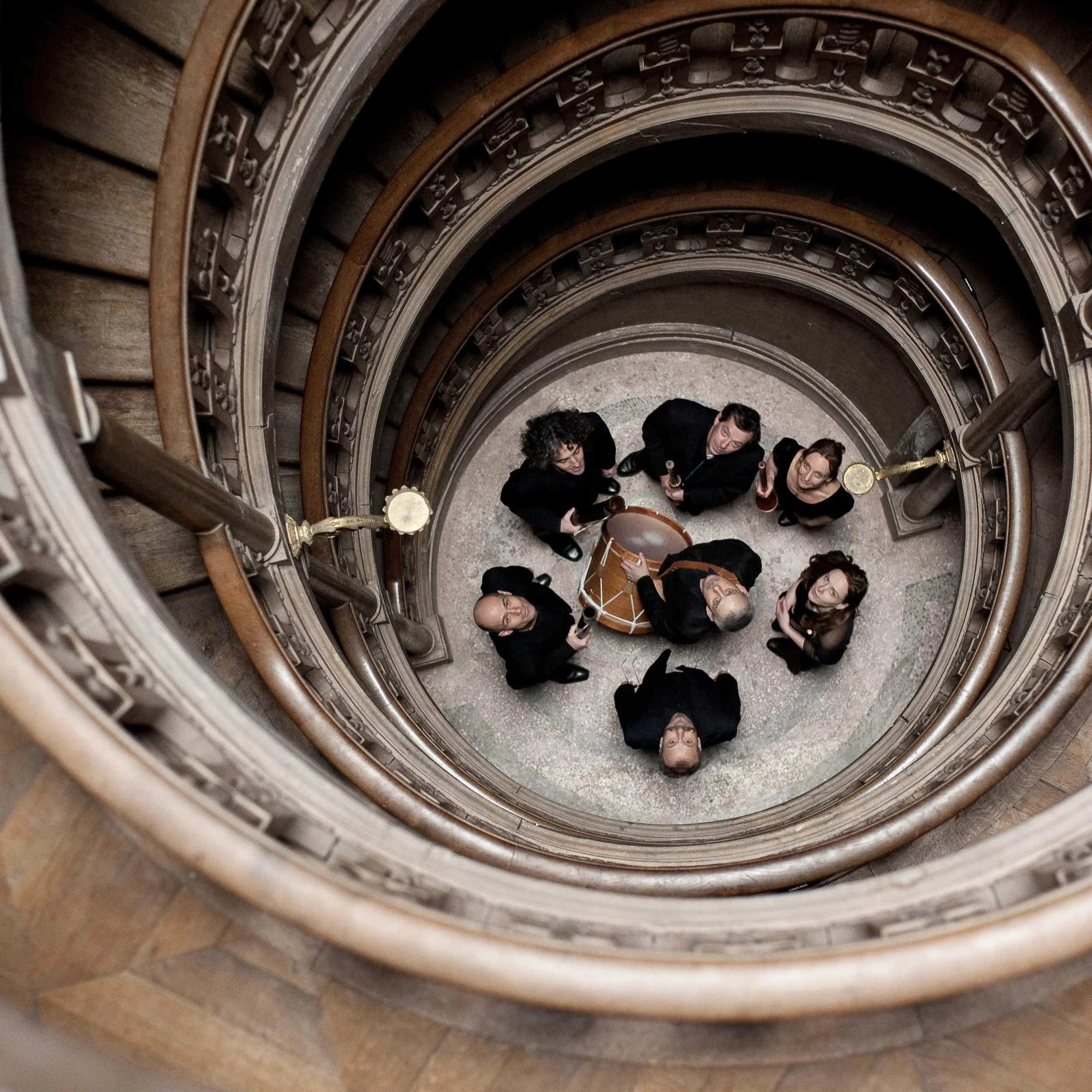At METAXenakis, musicians pay homage to visionary artist, architect, and philosopher Iannis Xenakis
Local and international creatives inspired by Xenakis’s legacy take part in Vancouver New Music festival
Stefan Smulovitz. Photo courtesy the artist
Vancouver New Music presents METAXenakis at the Annex from October 21 to 23 at 8 pm, with artist chats each night at 7:15 pm
LET’S TALK ABOUT the elephant in the room—or the elephant on the screen, as the case might be.
The room housing the screen is the Annex, where Vancouver New Music will host its three-day METAXenakis festival this weekend. And the pachyderm in question belongs to composer, violist, and software designer Stefan Smulovitz, who purchased it online at the deep discount price of 10 dollars. Or 15; he can’t remember.
It is, of course, only a 3D simulation of an elephant, created to be used in home-made video games like the one Smulovitz has designed to be controlled by the sonic output of the 16-piece Scratch Acid Orchestra, conducted by VNM artistic director Giorgio Magnanensi. The Roberts Creek–based multimedia artist explains that he sourced his large grey friend from Unity Technologies’ asset store, along with an assortment of cephalopods, vintage camper vans, and other digital “characters” that will contribute to his performance.
“This way, I don’t have to design an elephant,” Smulovitz admits in a telephone interview. “I don’t have the skills to make to all of that from scratch.” He is, however, skilled enough to design the software interface that will link music to image, and for his other contribution to METAXenakis he’ll team up with the Scratch Acid players for a structured improvisation in which his Mad Scientist Machine will give the performers visual cues about the sonic textures they should conjure.
In the deeply serious world of contemporary composed music, this sounds like it’s going to be as close to a three-ring circus as you’ll ever find.
The other, and larger, elephant in this particular room is the Romanian-born Greek composer and theorist Iannis Xenakis, a massively influential figure whose fusion of architectural structure, electronic innovation, and careful attention to detail reverberates through almost every aspect of contemporary music, from new works for string quartet to time-stretched hip-hop sampling.
Xenakis’s life reads like a combination of action movie and philosophy seminar. Born into a wealthy family, he joined the Communist-led National Liberation Front during the Second World War, fighting against Nazis and then against the right-wing generals who seized power, with the aid of the British, in a 1944 coup. After being disfigured by shrapnel during street fighting, losing the use of his left eye, he went into self-imposed exile in 1947 and was sentenced to death in absentia by the junta—a threat not lifted until 1974. Despite partial blindness, he pursued a career in architecture, eventually joining the seminal modernist Le Corbusier’s Paris atelier.
“For years I was tormented by guilt at having left the country for which I'd fought,” he told one biographer. “I left my friends—some were in prison, others were dead, some managed to escape. I felt I was in debt to them and that I had to repay that debt. And I felt I had a mission. I had to do something important to regain the right to live.”
Although Xenakis’s ultimate goal was to transform society—a project that has continued beyond his death in 2001—music, not building, would turn out to be his primary medium. And while some of METAXenakis’s featured performers will offer detailed readings of his carefully notated scores, others—like Smulovitz and Vancouver sound artist Sara Gold—will pay homage to his conceptual strategies. (METAXenakis is part of transcontinental centenary celebration of Xenakis’s life and work.)
Smulovitz considers Xenakis a primary influence, even naming his well-regarded Kenaxis software program after the composer. “I heard [his 1954 composition] Metastaseis, and also saw the drawings he did for Metastaseis, with all those incredible glissandos mapped out, and I was really interested in it,” he explains. “That was something I set up in my music software, this ability to do long glissandos over time. What also gave me a bit of a window into his composing were the graphic notes that he made—not the scores, but the preparatory drawings, the graphics that he outlined before he actually scored his work. They really influenced me quite a bit, that idea of drawing them out and then scoring them afterwards. So that was huge, and then also he was the one that came up with the idea of granular synthesis, which has been a large part of my work as well.”
In granular synthesis, which has since trickled down into pop and rock music production, electronic artists “take a sound and chop it up into tiny little grains,” Smulovitz continues. “And some of those grains are so small that if you hear them by themselves they almost sound like clicks, but then when you put a mass of them together, you can kind of reconstitute the sound from those tiny grains. You can also stretch sounds out; you can create the inner quality of sounds by using granular synthesis. It reveals the inner nature of a sound. That was a huge part of what I did with my early electronic music.”
Sara Gold.
Gold, who’ll perform solo using vintage electronic mixing consoles, will take a more impressionistic approach to Xenakis’s music. Whereas Smulovitz will be using samples from the Xenakis archives as well as his own compositional strategies, she’s drawing inspiration from late composer’s graphic scores, and then translating them into to her own dense, glitchy soundscapes. (These, she explains, are created using a relatively new discovery called “no-input mixing”, in which a mixing board’s output is fed back into its input, creating feedback loops that can be controlled in much the same way as a modular synthesizer.)
“There’s this image that I have actually saved on my cell screen right now that’s one of Xenakis’s scores where it’s like intersecting lines, like straight lines going down and down and intersecting into one final point,” she says. “I found that fascinating, and thought I would take that as my direction for this set.
“I didn’t know about Xenakis until the festival,” she admits, “but I’m in love! I’m fascinated. And there are so many different things to explore: different movements, different eras of his life.”
With larger resources at his command, Smulovitz says that he’s particularly drawn to Xenakis’s idea of the polytope, which is in some ways a return to the text/sound basics of classical Greek theatre, and in others a multimedia acceptance of new technological advances. In his as-yet-untitled Mad Scientist Machine piece with the Scratch Acid Orchestra, he’ll create an immersive sonic environment by placing eight groups of musicians around the Annex’s two levels, cuing them with differently coloured lights, and then asking them to improvise using some of the sonic categories Xenakis deployed in his own work.
“Spirals and clouds, cascades and galaxies, explosions, constellations, flows, and dust… These are different kinds of ideas that he used,” Smulovitz explains. “For instance, when the blue light comes on it’ll be his compositional idea of ‘clouds’. And ‘clouds’ means something different than ‘constellations’ of sound, which would be more pointillistic and triggered by a different colour.”
The result should be unpredictable, lively, communal, unsettling, lush, and both visually and aurally stimulating. Xenakis would approve.















